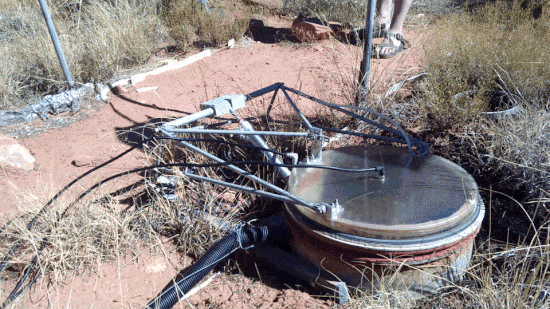More CO2 fluxes in biocrusted soils
August 16, 2018 – 6:21 pmWe have a new paper out on CO2 fluxes in biocrusted soils. The experiment takes advantage of a unique automated CO2 chamber system inside of a climate change manipulation. Using clear lids as seen below, can monitor photosynthetic uptake from biocrusts as well as CO2 efflux from both the biocrusts and the underlying soils.

In the first study, we explored the early effects of an infrared-lamp induced warming treatment and looked at correlations between fluxes and environmental variables. One of the cool things we saw was that crusts actively photosynthesized a lot in the winter, including under snow.
In this study we both add data on the other treatment in the experiment, a water treatment, as well as examined the experiment nine years later. A few things had changed about how the treatments were implemented but together the data show how long term effects can change over time. We also saw some interesting interannual variation that I believe is linked to plant effects.
I think in these chambers the effect of root respiration is actually pretty big, even though the chamber walls go down 30 cm. The roots of desert plants are just pretty enterprising when it comes to finding unexplored volumes of soil where they might be able to get water and nutrients.
Here’s the big summary of all the years that shows how the biocrusted soils in these different treatments exchange CO2 over time.

It was a fun study to work on, I was really pleased with the papers that ended up coming together, and I’m excited to be working on making a similar chamber system to study fluxes in the Chihuahuan desert.
Sorry, comments for this entry are closed at this time.